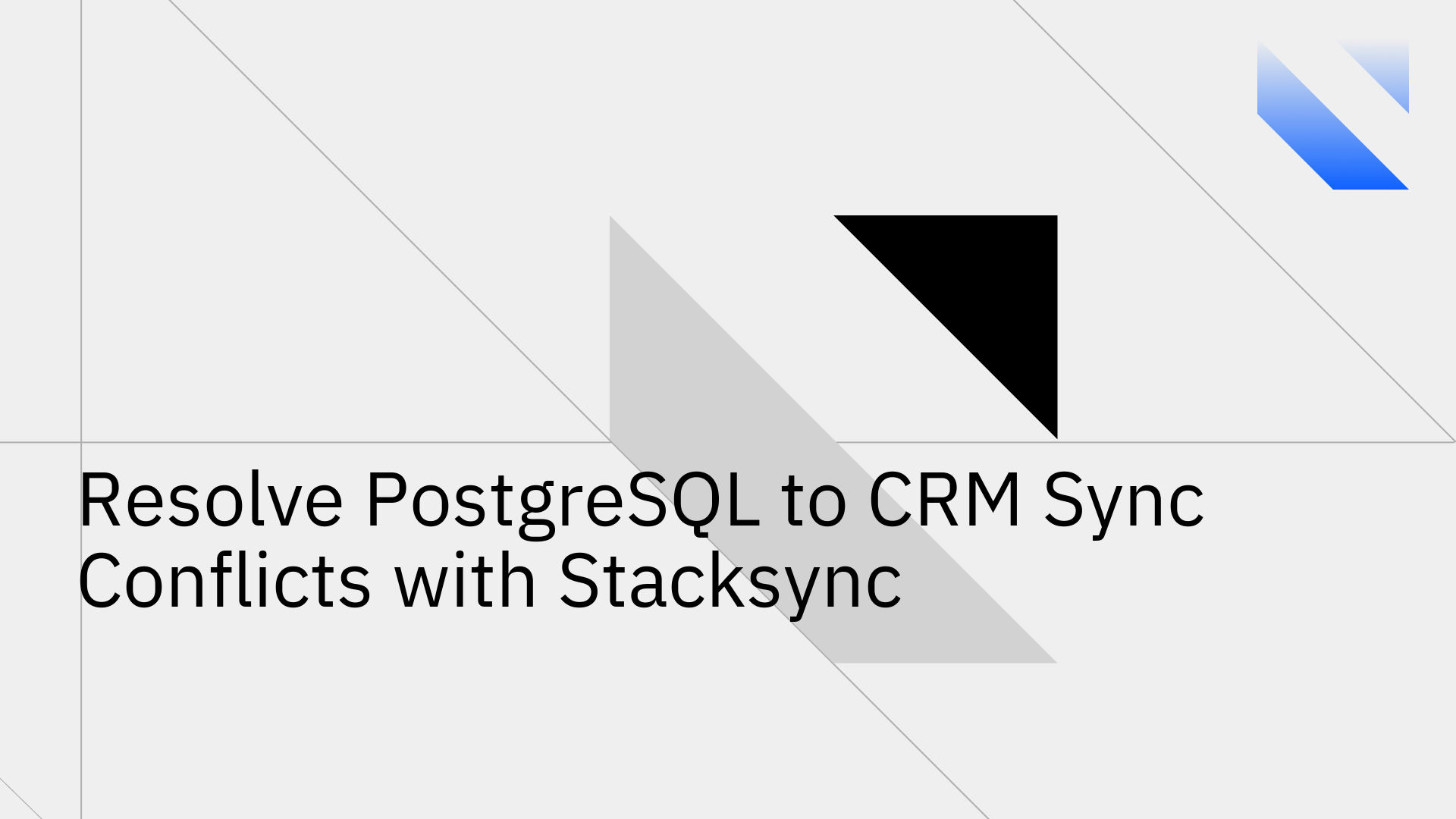
Keeping data consistent between a powerful database like PostgreSQL and your Customer Relationship Management (CRM) system is a common headache. As your business grows, so does the risk of postgresql to crm sync conflicts, duplicates, and outdated information.
These issues can lead to incorrect reports, frustrating customer experiences, and wasted time for your team. When your data is out of sync, you can't trust it to make important decisions.
Stacksync is a platform built to solve this exact problem. It offers real-time, two-way synchronization with smart, automated conflict resolution to ensure your data is always accurate and reliable across all your tools.
A data sync conflict is what happens when the same piece of information gets changed in two different places at roughly the same time. For example, a customer's record is updated in both your CRM and your PostgreSQL database before the two systems have had a chance to sync up. This leaves you with two different versions of the truth.
Common causes of these conflicts include:
To handle these situations, you need a clear conflict resolution strategy, which can involve choosing the newest version, flagging it for a person to review, or merging the changes [6]. Without an automated system, this becomes a messy, manual job.
Trying to manage sync conflicts with manual checks, custom-coded scripts, or basic integration tools is often a losing battle. These approaches are inefficient, unreliable, and simply don't scale as your business grows.
Here are the key problems with these old-school methods:
Stacksync is the modern solution to these challenges, designed from the ground up for reliable, real-time, and bi-directional data integration. Instead of just moving data around, Stacksync offers a sophisticated platform that intelligently manages and resolves conflicts before they can cause problems.
Stacksync’s conflict resolution engine uses clear, predefined rules to handle discrepancies automatically. A common strategy is "Last Write Wins," where the most recent update is automatically declared the winner, preventing data from being accidentally overwritten [7]. This ensures you always have a single source of truth without anyone needing to step in and fix things manually. You can learn more in our deep dive on Stacksync's conflict resolution engine.
One of the best ways to prevent conflicts is to give them no time to happen. Stacksync’s real-time architecture syncs data in milliseconds, which drastically shrinks the time window where two conflicting changes could occur. When data moves instantly between your PostgreSQL database and CRM, it becomes nearly impossible for two users to edit the same record at the same time. This is a cornerstone of database real-time synchronization best practices.
Instead of letting sync errors happen silently in the background, Stacksync flags every issue in a clear, centralized dashboard. This gives you full visibility into how your data is flowing. Our platform includes features that allow you to view, retry, or even revert failed syncs with a single click, giving you complete control over your data’s integrity.
Powerful data integration shouldn't be complicated. With Stacksync, you can set up a robust, conflict-free sync between PostgreSQL and your CRM in just a few minutes.
Synchronization conflicts between PostgreSQL and your CRM are a major roadblock to creating a single, reliable view of your business data. Manual fixes and basic tools simply aren't built for the complexity and speed of today's data needs.
Stacksync is the essential solution for engineering and data teams who need their data to be consistent and accurate. By providing a reliable, scalable, and automated way to sync data, Stacksync empowers your team to trust your data and focus on what matters most.
Ready to experience conflict-free data synchronization? Book a demo to see Stacksync in action.